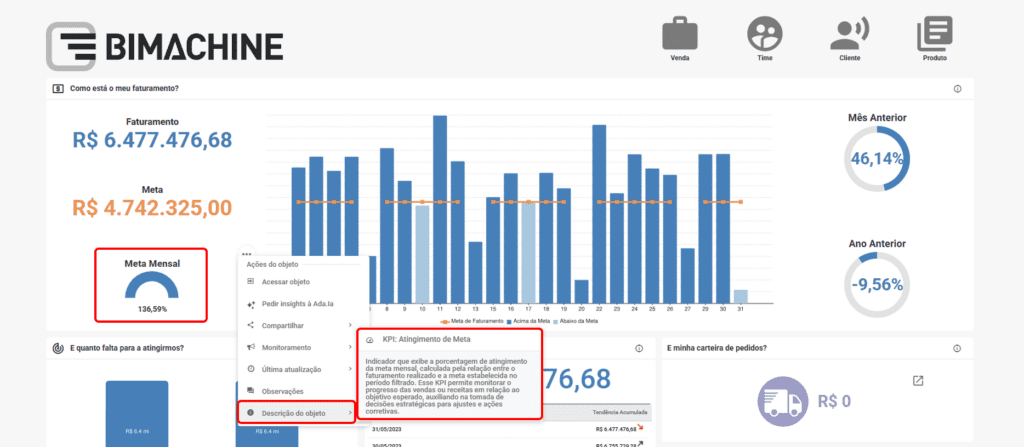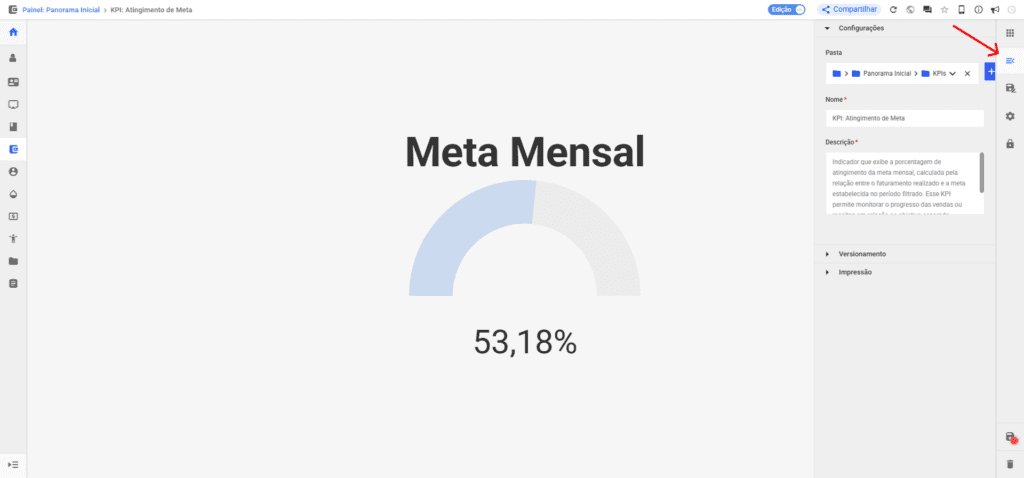With the arrival of Ada.ia, our artificial intelligence that generates analytical insights, it is essential that all objects are well named and described. This ensures that Ada.ia correctly understands the purpose of each object and is able to deliver relevant, clear and contextualized answers.
Why is this important?
Ada.ia reads the data provided in the built object, including the object’s title and description, so that before analyzing the data it studies the object to understand its purpose and details, making sure that the user’s question is well interpreted and that it has an answer that makes sense with the data provided along with the purpose described in the object. This prior reading means that, when it receives a question from the user, it:
- Understands what is being asked,
- Knows where to look for the information,
- And delivers an answer that is consistent with the objective of the object.
Practical example

Imagine that you have a “Commercial” cockpit and within it a KPI with the name “KPI: Target Achievement“, with the following description:
| “Indicator that displays the percentage of achievement of the monthly target, calculated by the ratio between the turnover achieved and the target set in the filtered period. This KPI makes it possible to monitor the progress of sales or revenue in relation to the expected target, helping to make strategic decisions for adjustments and corrective actions.” |
When you ask Ada.ia “How is the target being achieved this month?”, she will know that:
- There is a KPI related to targets;
- The expected format of the answer is a percentage;
- The data comes from turnover vs. monthly target;
- It can show the evolution or trend based on the period analyzed.
All this thanks to a well-crafted title and description. Without this, the AI may struggle to understand the context and deliver a useful insight.
How to correctly configure
To ensure that Ada.ia understands your objects, follow these guidelines:
- Give the objects clear and objective names (e.g. “Mini Chart: Daily Goal Achievement” instead of “Goal Chart”).
- Describe what the object shows and what it is used for.
- Use complete and specific sentences.
- Include units of measurement, filters applied, periodicity, etc.

Where to edit:
- In existing objects, go to the desired object and click on the “General Settings” icon to adjust the name and description.
- When creating a new object, fill in the “Name” and “Description” fields carefully.
The clearer the purpose of each object, the better Ada.ia will respond.
👉 Make it a habit to describe objects. By doing so, you’ll boost Ada.ia’s insights and turn your data into increasingly intelligent decisions.

